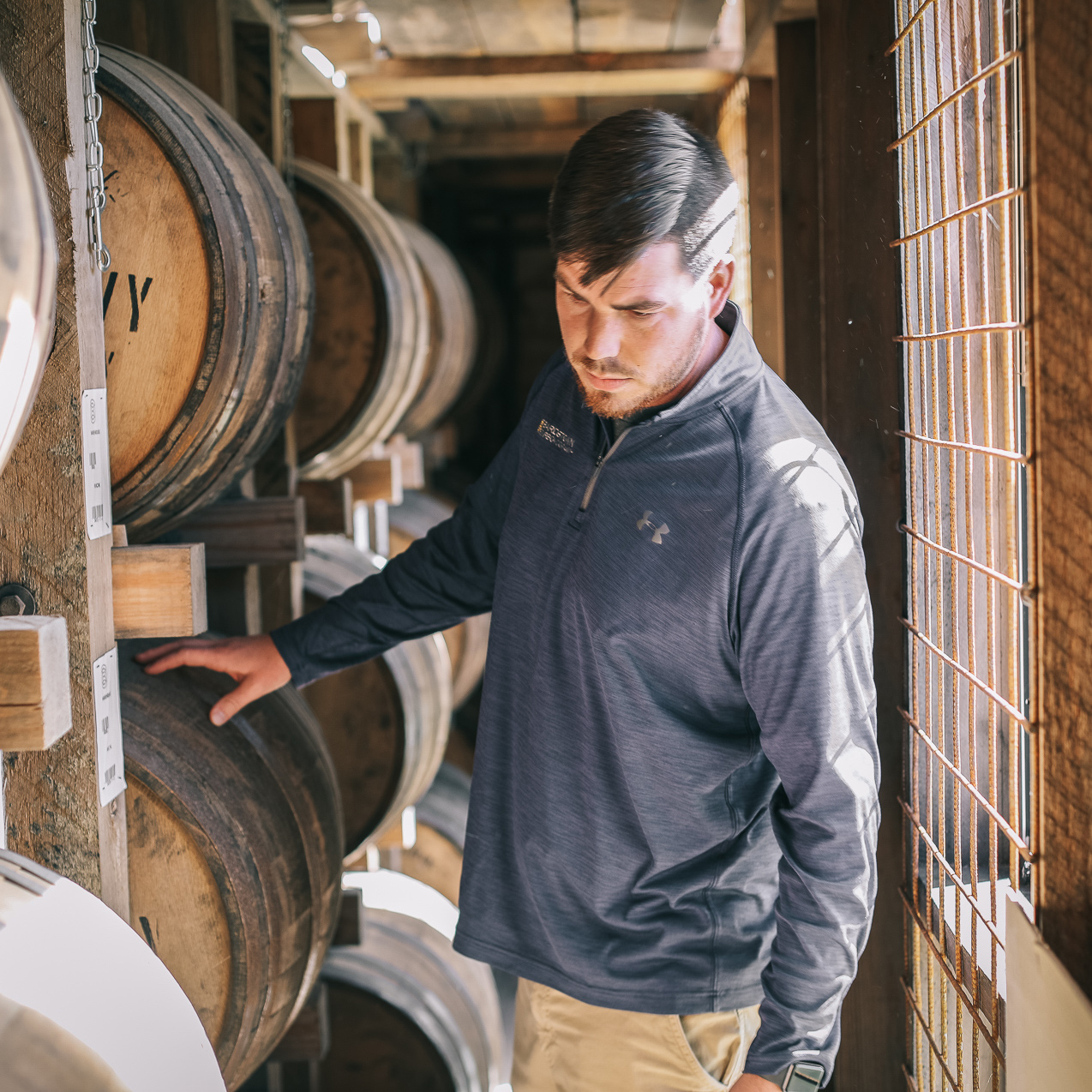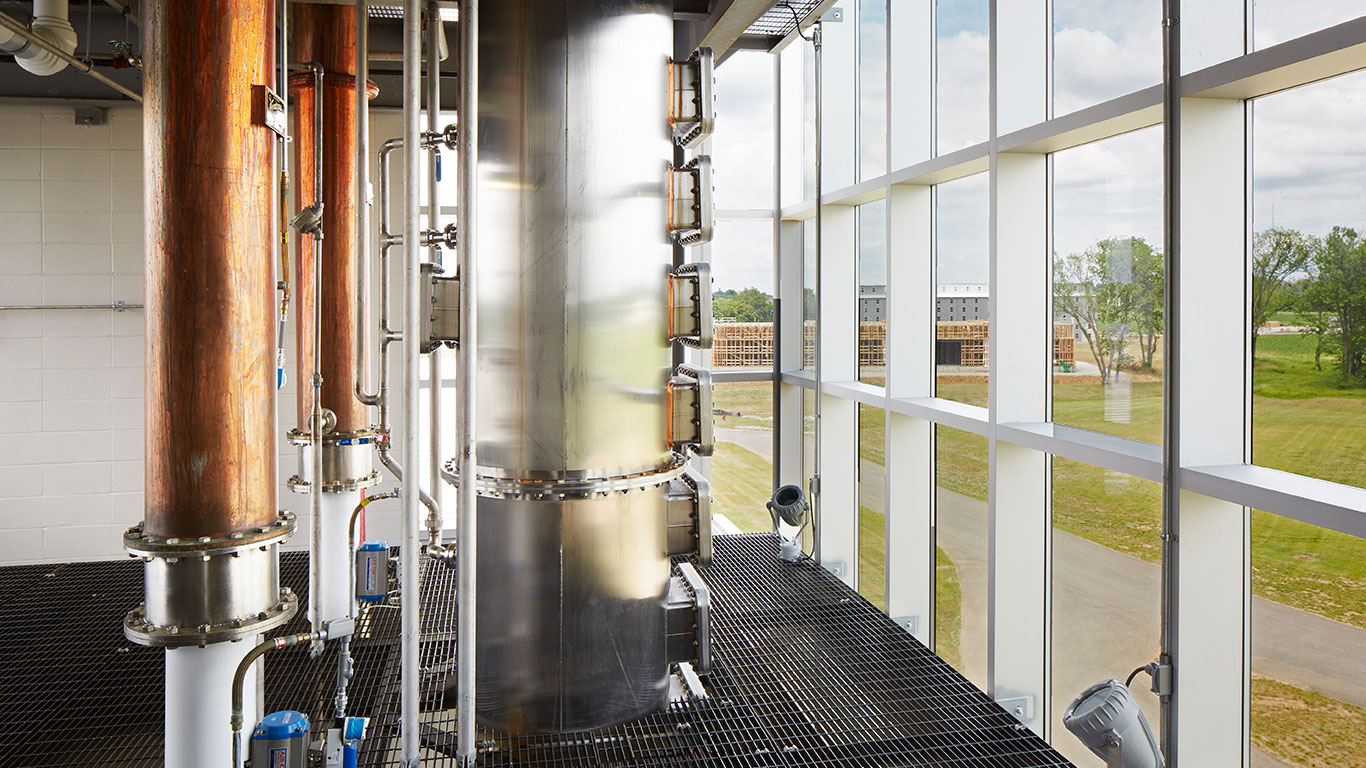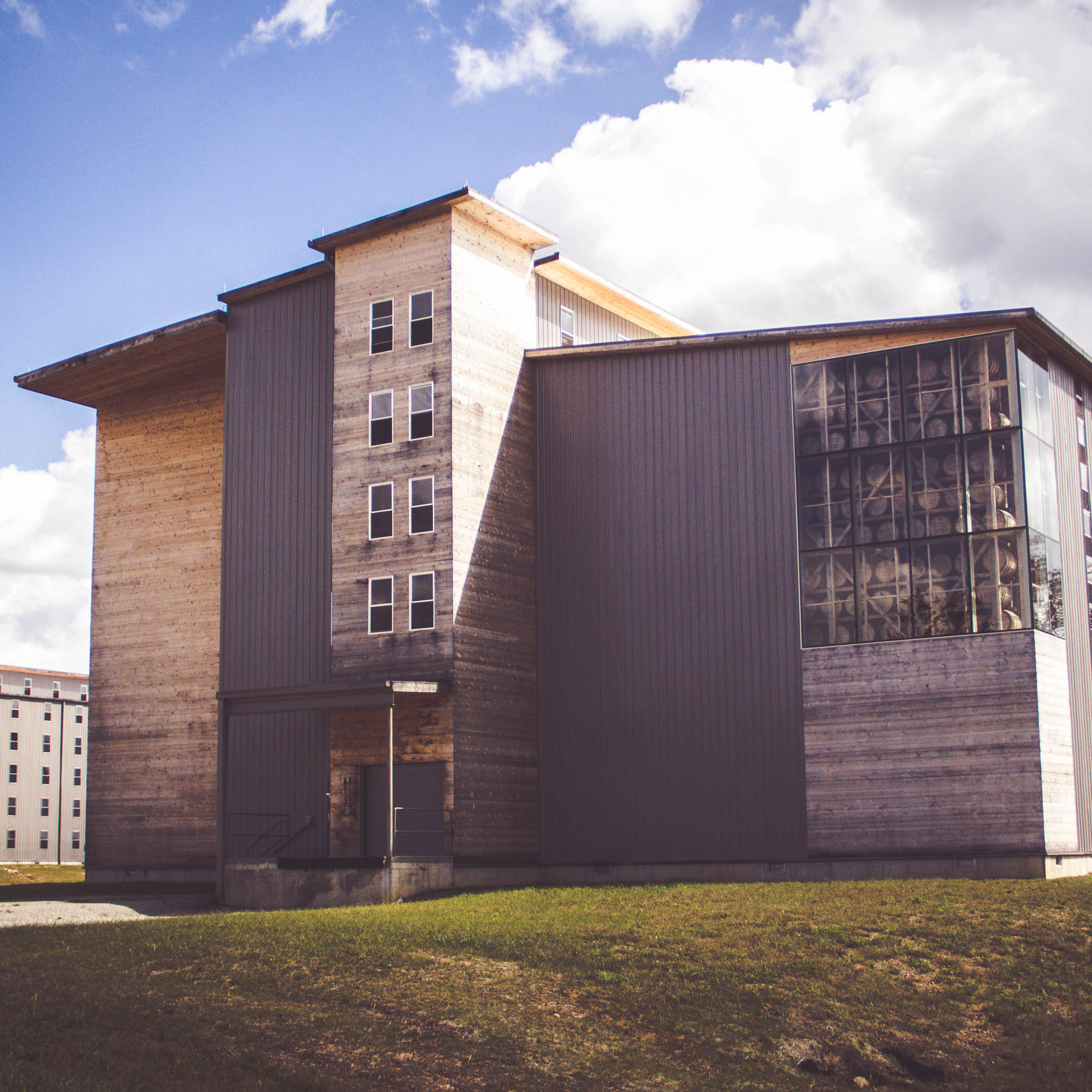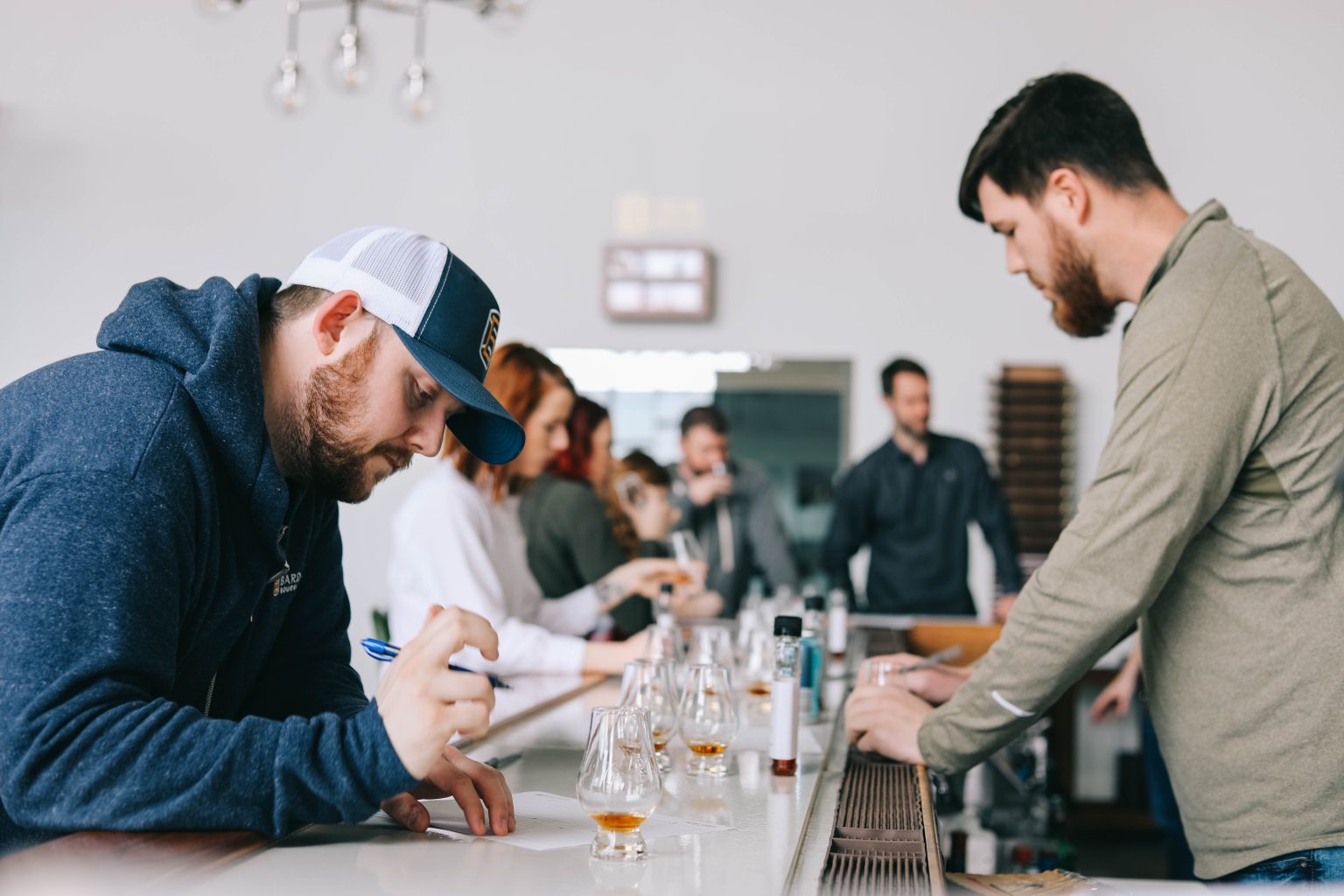
Nick Smith — head distiller and director of distilling operations at Bardstown Bourbon Company — is one of the shooting stars of Kentucky bourbon. Smith, who grew up in Bardstown, a stone’s throw from some of the biggest whiskey distilleries in the country, has a passion for whiskey that shines through in every release.
As the head distiller for Bardstown Bourbon Company, Smith makes whiskeys for one of the freshest distilleries in Kentucky, while also chaperoning a contract distilling operation for a long list of whiskey brands. While the former is easy enough to understand, contract distilling is a frequently maligned process, misunderstood by the average whiskey drinker and likely completely unknown to the passive whiskey drinker.
It can take millions in start-up capital to get a distillery up and running, not to mention the years of aging. That’s where the contract distiller comes in. Often times, brands will hire a contract distiller to produce their whiskey from start to finish, well before they can build up their own production capacity. Other times contract distillers work with heritage producers just looking to get some extra juice aging to meet skyrocketing demand, over and above what those producers can make on their own.
Of course, there’s a lot more to the process than that. Smith and Bardstown are making juice for some of the hottest names in whiskey right now, from Blue Run to Kentucky Owl to Belle Meade to Pursuit United, running 40 different mash bills in 2021 alone. We figured that if anyone could help shed light on this process, it was him.
Also Read: The Top 5 UPROXX Bourbon Posts Of The Last Six Months
- The Single Best Bottle Of Whiskey From Each Of The 50 States
- The 50 Best Bourbon Whiskeys Of 2021, Ranked
- Every Winning Bourbon From Our 2021 Taste Tests, Blind Tasted And Re-Ranked
- The Best Value-Per-Dollar Bourbon Whiskeys, Ranked
- The 100 Best Whiskeys Our Head Drinks Writer Tasted In 2021

So what is the difference between contract distilling and sourcing bourbon?
With contract distilling, the big difference is with us is customization from the very beginning on. Every customer we have is definitely different, from start-ups that might not know anything at all about the bourbon industry but they want to get started in it, to people who already have an established brand and know what they want but just don’t have all the details. That then goes all the way up to big names that have been doing this for over 200 years and just need a little bit of extra juice. Where we come into play is to be able to customize what it is that they’re looking for. We’re able to do any bourbons or whiskeys. The customer can sit down with us and go through that process step-by-step to customize it just for them.
And then on the sourcing whiskey side, you’re just going to be purchasing what is available on the market. So, no customizations. It’s just going to be what’s already being produced, and, usually, you’re not able to get too many new fill barrels. It’s going to be something that’s aged, and, currently, it’s hard to find any good products out there because a lot of people aren’t releasing as much of it as they used to.
So, let’s stick with the contract distilling side and walk through the process. How much influence do you, as a master distiller, have over the actual customization? Are you helping them select grains? Are you helping them select yeast? What’s the process there?
It’s definitely customer-dependent. But where I come into play is definitely how we do things here at Bardstown. You know, how our equipment runs, our beer age, our aging, where it’s going in the warehouse, the char of the barrel, the coopers that are available. As you said, the yeast we use. Everything from very start to finish.
So, say if it’s a new customer who doesn’t have any idea what they want, but they want to get into this industry and know how many barrels they’d like to start laying down, it all starts at the very beginning with a flavor profile. So, what we’ll do with a brand new customer is, we’ll go into the lab and I’ll pull out a wheated bourbon with a low wheat percentage, a wheated bourbon with a higher wheat, a wheat whiskey. Then we’ll move into a lower percentage rye bourbon, a high rye bourbon, and then some rye whiskeys, a four-grained bourbon, and then into American single malts as well. And we’ll go through all those profiles and try to see which one they’re most interested in for the grain profile that they would like to start with or the spirit type.
Once they get that and say, “Oh, I’d really like, say, wheated bourbon. That’s what I want to go with. I like the one that had a little higher percentage than the lower percentage.” we’ll dial it in from there.
What’s being dialed in?
So, if they say, maybe it was a 38 percent wheat that they tasted and they want to run one at a 36 percent. Then we’ll ask, “What percent corn do you want? Malted barley percentage?” And then we’ll dial it from there. After we get our grain recipe, we ask, “What yeast strain do you like? Here are the ones that we’ve used, the flavor profiles that you’d be looking at.” And then we go over the proofs, entry proof. What proofs do you want it off the still? Off the doubler, for those flavor profiles?
And then here’s the cooking process. That’s where I come into play, especially with the new customers. I’m working on the temperatures the grains are going to go in. I’m designing the actual procedure.
But then if you jump over to an established brand, they know exactly what they want. They’ve been running this same recipe for over 100 years or more. They come in and it’s more of how does our equipment run compared to their equipment? Things like what temperatures I set for our facility versus theirs. And with a lot of the technologies that we have in place, if they have the specs that they know that they like to run to produce at their facility, we can plug those same specifications in here to run the most similar product to what they’re producing at their facility. So you’re not going to see a big difference in that inventory whenever it comes of age.

How much customization can you do on the hardware side? I mean, you know, some people have Oregon pine fermentation tanks that are open, while other folks have stainless steel fermentation tanks for their mash. Some people want column stills, some people want pot stills.
On that, it’s more of a what we have situation. So with that type of customization, we don’t have, like you said, the different types of fermentation tanks. We’re operating all stainless steel fermentation tanks here. So, that’s what our process would be.
A customer that I do have — he’s a craft distiller down in Arkansas — what he produces in one year is what we produce in one day. So for him, it was like, “What’s in my best interest? Am I best to expand my facility, have that overhead, the extra labor, everything? Or partner with these guys and I can get that extra volume in a very short amount of time?” And with him, he runs a pot still. We have column stills here, so that’s where things are a little bit different.
But to make the most similar product on the grain side, I’m bringing in his Arkansas corn that he uses at his facility. His Arkansas wheat that he uses at his facility. He has two yeast strains that he uses. We’re using both those yeast strains and the yeast nutrients he likes to do in fermentation. So we run it as similar as we possibly can, but we’re handcuffed to the equipment that we do have here on site. That said, we have looked at possibly putting in a pot still and things like that, just to make us a little bit more complex.
That’s fantastic. And you’ve answered my next question about bringing in grains.
You name a grain, we’ve probably used it here. That’s all customized as well. We definitely use the main four grains the most, but we’ve also used, you know, popcorn, black popcorn, red, blue. We’ve used your bloody butcher heirloom corn, your hockey blue, white wheat, smoked mesquite malt. We use a lot of different grains here; Munich malt, 360 caramel malt. So, a lot of different varieties and different things for that customization for the customers.
How much advice do you give your customers in the barreling process? I feel like there are a lot of ways you can go with sizes, times, woods, and so on.
Yeah, we definitely give the customer as much advice as possible. If they want to do something, we will do that for them. But we will give advice like “this is what’s possible to happen if you do go down this road instead of a traditional route.”
But with the aging process, you know, it starts by what cooper they want to use. We’ve used maybe nine different ones here. Our main one is Independent Stave Company which, you know, they’re the world leader for a reason. So putting our product in those barrels would add top quality. We actually have a contract with Independent Stave Company to do a certain percentage of our barrels from them. We also use West Virginia Gray Barrel Company, Bayside, Kelvin, Barrel 53, Canton Cooperage, Zach Cooperage.
So you lead them in the right direction as best you can.
We use a lot of different ones and we’ll give our advice on which ones we prefer. But if the customer wants to go with a different cooper, then that’s fine. Then once we have the cooper, we’ll dial into what entrance proof they want to put it in at. I’ll give advice on what different proofs can provide. You know, a lot of the big guys that are looking to make the dollar at the end of the day, they’re going to go with that max 125 proof. If they know that they’re going to come out with a product in four years that’s going to be 90 proof, they’re going to be cutting that down to 90 proof by adding a lot of water. That means that they’re going to get the max amount of bottles out of that production. So they’re looking at the money side of things.
On the quality side of things, you can get different flavors if you go in at lower entry proofs. But you might not have as much volume at the very end because you’re not going to be cutting that spirit down. But you could have a lot better flavors coming out of that barrel. So, we’ll give all that advice for which direction they want to go. We have a lot of samples here, as well, to be able to pull from different entry proofs to show that aging out and let them try those.

What about warehouse placement?
Currently, we’re somewhat handcuffed on that because we are still a new distillery. We’re filling warehouses as they’re being built. You know, we only maybe have a two-week window on a warehouse being ready before we run out of space. With that, we have to kind of fill the warehouses as we can until we start pulling a lot more barrels out to re-gauge as these barrels get older. That will give us a lot more spaces available where we can kind of pick and choose, see where some customers might want to go.
That naturally leads to getting these whiskeys into bottles. Are you providing blending rooms and blenders to help them along that process? Do they bring in their own people? Is it a mix of both?
Everything. We definitely are involved on the blending side of things. We just don’t do the custom distillation here. It’s also custom blend, custom bottling, everything from pretty much start to finish. You know, we even have compliance in place for all those tricky things and getting your colors approved on your bottles, every single thing like that.
A lot of these new customers, they’ll need to get a product going right away. Of course, they want to wait at least four years, usually, on aging their bourbon. So a lot of times, these new customers, once we get a couple of years into their bourbon being aged, if they have some source material or anything like that that they’ve purchased, that’s where we’ll come together. Usually, it’s me, our quality manager, Travis Cantrell, Justin Willis, the head of operations, and then the big player in all the blending is Dane Calloway, our VP of new product development.
So, we’ll all get in there with the customers. We’ll work on the blends with the products they have available or any source material we might have available that we could sell them. And then that kind of gets their product going as they’re waiting on their units to age. So, once we get that blend ready to go, we’ll go to the bottling side of things and Johnny Caldwell, our bottling operations manager, takes it from there and they’ll go through bottle designs, label designs, cap designs — every single thing like that for the product, start to finish, to be ready to go. And usually, they’ll release that before their product that we have in the distillery is aged. That way, they can get their brand started and name out there, ready to go for people.
Is there a sort of acid test you have for which people you’re going to take on? Obviously, if somebody comes to you with 200 years of tradition and just needs that extra juice to keep up, it’s very different than somebody who’s wet behind the ears with more money than they know what to do with. What’s the selection process for Bardstown?
There is somewhat a selection process, you know. We would definitely prefer to help out the smaller guys or the start-ups or the established ones looking for a little bit more of that juice. A lot of ones that are getting into this industry right now are investors. So you know, it takes money to make money, right? So, a lot of investors are seeing that you know, “If we can lay money into bourbon and maybe let’s say we produce 1000 barrels and we’ve got the money to pay for them, it’s no big deal to sit on them for four years, six years, whatever it might be and then quadruple that value when we can sell them as a four-year oak.”
So, that’s become kind of popular, that a lot of these investors are getting into it so they can make some more money off of it in the long run. We do produce for people like that, but I would much rather produce for the ones that are truly wanting to start their brand and build their businesses, things like that. Instead of just an investment opportunity.
It’s interesting because, at the end of the day, you’re putting out stuff that you’re putting your blood, sweat, and tears into and you’re not even on the label, you know? It’s somebody else’s label. It’s somebody else’s story. What sort of pride do you feel when you see something go out there and it actually pops and lands in the market and makes a dent? As opposed to, you know, do you feel a sort of regret when it doesn’t?
I definitely take pride in it. I’ve always said that I take pride in every single thing that I make. One day, it’s going to be really cool that I’ll be able to go and sit down at a bar anywhere, any bourbon bar, and look on the shelf and probably be able to pick out 30-40 different brands that I created the product for. Which you know, name, recognition might not be on the bottle, but that’s no big deal to me. I’m not chasing fame or anything like that. I just have a passion for making bourbon. As we’re building our brand, it’s really great that we’re able to help out these other ones.

0 Commentaires